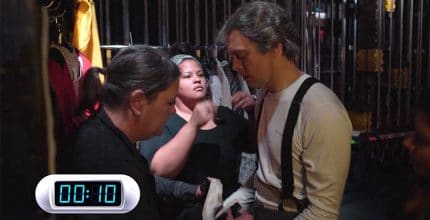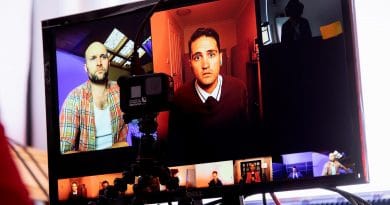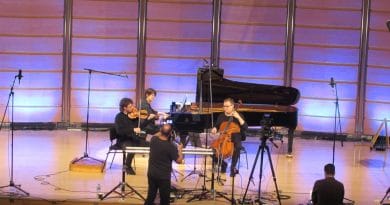Is social distancing really practical for Australian theatre?
Over the past couple of weeks, there has been a lot of talk about social distancing models for theatres around Australia and what entertainment might look like when venues begin to re-open. Whilst there is obviously an enormous emphasis on re-starting the economy and getting those working in the arts back to work; just how practical is social distancing for the theatre industry?
How many is too many?
It is perhaps important to mention here that whilst many people in Australia have not yet had the virus and don’t know of anybody that has, the virus has claimed the life of almost 500k individuals around the world and the risk is real. Austalia has been very lucky up to now, compared to other nations; and swift, accurate actions reduced the health impact very early on.
So as we re-emerge from lockdown, venues are currently developing their own safe work models and a number of venues now have programming goals in place. But how many people can realistically be in a theatre building whilst adhering to social distancing practices? On an average trip to the theatre, you might find that you are awkwardly close to a fellow audience member on more than one occasion. Including but not limited to:
- Taking the elevator from the car park
- Arriving in the main foyer
- Queuing for ticket collection
- Queuing for a bar
- Using the bathroom
- Queuing at ticket checkpoints
- Navigating the narrow row to your seat
- Taking your seat next to a lovely, chatty older lady with lipstick on her teeth, who is attempting to mask the smell of gin and tonic radiating from her with a final spray of the perfume she recently won at bingo.
Not to mention the performers and show crew. How can an ensemble practise social distancing in a cramped shared dressing room? Musicians in an orchestra pit? Or a chorus waiting in the wings?

And then there’s the issue of show content . . . there is a very limited catalogue of productions that can be staged whilst following the current rules. Cinderella wouldn’t exactly be the same without her intimate moment with Prince Charming and just imagine removing Judas’ kiss for Jesus Christ Superstar, well that would send history in a whole new direction.
Final thoughts on social distancing have to consider the impact on the ‘experience’. Have you ever been the only one at a comedy show? Or even just the old one laughing at a comedy show? It can be a pretty confronting experience and given that this is what audiences are handing over their hard-earned dollars for, significant consideration needs to be given to ensuring audiences are leaving satisfied.
Secondly, let’s consider the simple economics of staging a show
Staging a live performance event is incredibly labour intensive. There are many people required to prepare and execute an event that exists for a moment in time and then it’s gone. Each member of the team is often providing a different skill and each contributing to the bigger picture.
When restrictions began to lift, certain industries were able to respond in a way that meant they could open their doors and begin welcoming customers back whilst enforcing social distancing guidelines set out by the Government. Restaurants were initially allowed to have up to 10 guests and quick thinking restauranteurs created a model of an exclusive group booking. By doing this, they were able to calculate the total cost of opening the business for a night including food cost, staff cost, etc and put a minimum spend restriction in place so they could be sure that they were not losing money by opening. Then by splitting the opening hours into maximum timeslots, say 2 hours, they knew that they could get 3 groups per night, each paying the minimum fee and hey presto; a viable business model for this industry.
Unfortunately, I can’t imagine either of these strategies working for larger-scale theatre. Can you imagine calling the box office to be informed, “the running cost of tonight’s performance is $65,000 and we can accommodate 100 people, therefore a ticket costs just $650. How many would you like?” or cast members being told, “we need to squeeze in a few extra performances this week to make sure we breakeven”.
The truth is, live entertainment is very costly to produce and the economics for larger shows simply don’t stack up.
So what are we likely to see in the near future?
Well, taking into account everything mentioned above, it seems most likely that the type of live entertainment we are likely to see first, will fit a very specific model;
- Shows with an extremely small cast & crew requirement.
- Shows with low overheads to ensure financial viability with significantly reduced audience figures.
- Shows with content that allows for zero on stage contact.

Mindgame by Anthony Horowitz
Set in a mental hospital this psychological thriller is normally performed by three actors and begins with mind engaging and formal conversations that can be lead without the actors getting too close to one another. The issue with this play presents itself during the second half when the manipulation scenes take place however seeing as this is a psychological thriller and that the main character struggles with knowing what real life is the manipulation and kidnapping scenes can be made into traps and special effects for a more COVID friendly spin on the original play.
Escaped Alone by Caryl Churchill
This play consists of four women sitting down in their garden and having monologues spliced in between them, this is why with a wide enough stage their chairs could be spread out enough in order for each of them to speak whilst remaining at a safe distance.

The Audience by Peter Morgan
Originally debuted on the West End this production brings to life Queen Elizabeth the second and her conversations with her prime ministers. Thanks to the formality of these conversations standing the required distance apart should be easy to pull off in such a play.
The production which starred Helen Mirren on both Broadway and the West End has won and been nominated for many theatre awards such as two tony awards and three evening standard awards and could potentially be very enjoyable for theatre lovers to see a new social distancing version of this show.
Hedwig and the Angry Inch by John Cameron Mitchell
Playing since 1998 this play has been featured all over the world from Broadway to Australia and even though part of the joy of watching it is seeing Hedwig’s band live and all the beautiful music they play together with the beauty of technology the music could still be enjoyed without needing the band to be present on stage.
The musical still includes some scenes that will not be delivered quite as beautifully because the actors can’t get too close to one another however the story which relies heavily on monologues from Hedwig will still be there just with a few new twists and turns and with the amazing actors that tend to get cast in this role such as Neil Patrick Harris and Darren Criss as well as the incredible storyline this musical will always be a head-turner.

The Last Five Years by Jason Robert Brown
With only two main actors sharing the stage for one scene this musical shows the love story of Jamie and Cathy and is told in reverse chronological order. This love story can be enjoyed even in these tough times and the audience can still get its full effect on account of the number of actors needed to create this masterpiece.
All in all, whilst in theory we could socially distance in some theatres, the offering is going to be very limited. So let’s all play our part to help stop the spread and hopefully, we will be back at the theatre before we know it.




